Argonne Fast Source Reactor (AFSR) was a research reactor which was located at the Argonne National Laboratory, a United States Department of Energy national laboratory, facility located in the high desert of southeastern Idaho between Idaho Falls, Idaho and Arco, Idaho.
The Argonne Fast Source Reactor was a tool used to calibrate instruments and to study fast reactor physics, augmenting the Zero Power Plutonium Reactor (ZPPR) research program. Located at Argonne-West, this low-power reactor—designed to operate at a power of only one kilowatt—contributed to an improvement in the techniques and instruments used to measure experimental data. [1]
The AFSR was designed to supplement the existing facilities of the Idaho Division of Argonne National Laboratory. It was designed as a readily available source of both fast and thermal neutrons for use as follows: [2]
In the fall of 1970, this reactor was moved to a new location adjacent to the ZPPR facility at the ANL West site of the NRTS. [2]
The reactor started up on October 29, 1959, and operated through the late 1970s. [1]
AFSR was designed and built in 1958 near EBR-I on the National Reactor Testing Station (NRTS). AFSR had a design power of one kilowatt. [2]
AFSR operated through the late 1970s. The reactor is now shutdown and defueled. [2]

Argonne National Laboratory is a federally funded research and development center in Lemont, Illinois, United States. Founded in 1946, the laboratory is owned by the United States Department of Energy and administered by UChicago Argonne LLC of the University of Chicago. The facility is the largest national laboratory in the Midwest.
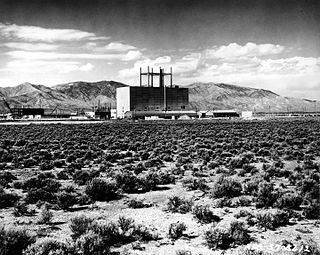
The Naval Reactors Facility (NRF) is located 52 miles northwest of Idaho Falls, Idaho. The NRF is a United States Department of Energy-Naval Reactors facility where three nuclear propulsion prototypes A1W, S1W and S5G were located. It is contractor-operated for the government by Fluor Corporation through their subsidiary, Fluor Marine Propulsion, LLC, which also operates Bettis Atomic Power Laboratory and Knolls Atomic Power Laboratory.
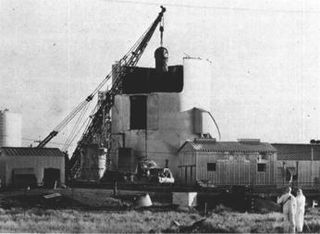
Stationary Low-Power Reactor Number One, also known as SL-1 or the Argonne Low Power Reactor (ALPR), was a United States Army experimental nuclear reactor in the western United States at the National Reactor Testing Station (NRTS) in Idaho about forty miles (65 km) west of Idaho Falls, now the Idaho National Laboratory. On January 3, 1961, a steam explosion killed all three of its young military operators, pinning one of them to the ceiling with a reactor vessel plug. It remains the only U.S. reactor accident to cause immediate deaths.
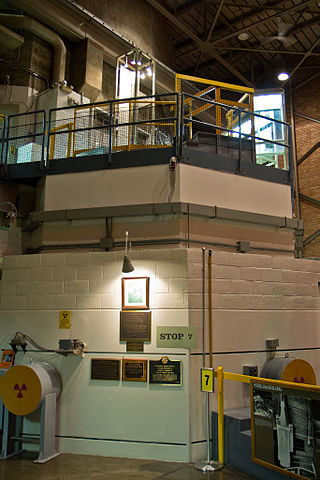
Experimental Breeder Reactor I (EBR-I) is a decommissioned research reactor and U.S. National Historic Landmark located in the desert about 18 miles (29 km) southeast of Arco, Idaho. It was the world's first breeder reactor. At 1:50 p.m. on December 20, 1951, it became one of the world's first electricity-generating nuclear power plants when it produced sufficient electricity to illuminate four 200-watt light bulbs. EBR-I subsequently generated sufficient electricity to power its building, and continued to be used for experimental purposes until it was decommissioned in 1964. The museum is open for visitors from late May until early September.
The A1W reactor is a prototype nuclear reactor used by the United States Navy to provide electricity generation and propulsion on warships. The A1W designation stands for:
The S1W reactor was the first prototype naval reactor used by the United States Navy to prove that the technology could be used for electricity generation and propulsion on submarines.

Idaho National Laboratory (INL) is one of the national laboratories of the United States Department of Energy and is managed by the Battelle Energy Alliance. Historically, the lab has been involved with nuclear research, although the laboratory does other research as well. Much of current knowledge about how nuclear reactors behave and misbehave was discovered at what is now Idaho National Laboratory. John Grossenbacher, former INL director, said, "The history of nuclear energy for peaceful application has principally been written in Idaho".
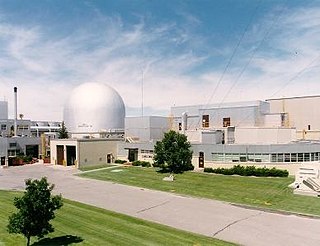
The integral fast reactor is a design for a nuclear reactor using fast neutrons and no neutron moderator. IFR would breed more fuel and is distinguished by a nuclear fuel cycle that uses reprocessing via electrorefining at the reactor site.
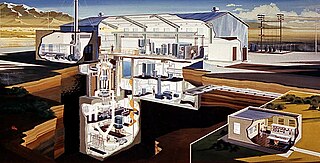
The BORAX Experiments were a series of safety experiments on boiling water nuclear reactors conducted by Argonne National Laboratory in the 1950s and 1960s at the National Reactor Testing Station in eastern Idaho. They were performed using the five BORAX reactors that were designed and built by Argonne. BORAX-III was the first nuclear reactor to supply electrical power to the grid in the United States in 1955.
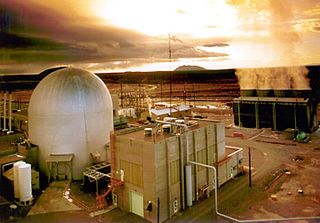
A materials test reactor (MTR) is a high power research nuclear reactor.

The Advanced Test Reactor (ATR) is a research reactor at the Idaho National Laboratory, located east of Arco, Idaho. This reactor was designed and is used to test nuclear fuels and materials to be used in power plants, naval propulsion, research and advanced reactors. It can operate at a maximum thermal power of 250 MW and has a "Four Leaf Clover" core design that allows for a variety of testing locations. The unique design allows for different neutron flux conditions in various locations. Six of the test locations allow an experiment to be isolated from the primary cooling system, providing its own environment for temperature, pressure, flow and chemistry, replicating the physical environment while accelerating the nuclear conditions.

The Zero Power Physics Reactor or ZPPR was a split-table-type critical facility located at the Idaho National Laboratory, Idaho, USA. It was designed for the study of the physics of power breeder systems and was capable of simulating fast reactor core compositions characteristic of 300-500 MWe demonstration plants and 1000 MWe commercial plants.

A Next Generation Nuclear Plant (NGNP) is a specific proposed generation IV very-high-temperature reactor (VHTR) that could be coupled to a neighboring hydrogen production facility. It could also produce electricity and supply process heat. Up to 30% of this heat could be used to produce hydrogen via high-temperature electrolysis significantly reducing the cost of the process. The envisioned reactor design is helium-cooled, using graphite-moderated thermal neutrons, and TRISO fueled.

The Office of Nuclear Energy (NE) is an agency of the United States Department of Energy which promotes nuclear power as a resource capable of meeting the energy, environmental, and national security needs of the United States by resolving technical and regulatory barriers through research, development, and demonstration.

A nuclear microreactor is a plug-and-play type of nuclear reactor which can be easily assembled and transported by road, rail or air. Microreactors are 100 to 1,000 times smaller than conventional nuclear reactors, and when compared with small modular reactors (SMRs), their capacity is between 1 and 20 megawatts whereas SMRs comes in the range from 20 to 300 megawatts. Due to their size, they can be deployed to locations such as isolated military bases or communities affected by natural disasters. It can operate as part of the grid, independent of the grid, or as part of a small grid for electricity generation and heat treatment. They are designed to provide resilient, non-carbon emitting, and independent power in challenging environments. The nuclear fuel source for the majority of the designs is "High-Assay Low-Enriched Uranium", or HALEU.
Advanced Reactivity Measurement Facility I (ARMF-I) was a research reactor which was located at the Argonne National Laboratory, a United States Department of Energy national laboratory, facility located in the high desert of southeastern Idaho between Idaho Falls, Idaho and Arco, Idaho. ARMF-I was nearly identical to ARMF-II.
Advanced Reactivity Measurement Facility II (ARMF-II) was a research reactor which was located at the Argonne National Laboratory, a United States Department of Energy national laboratory, facility located in the high desert of southeastern Idaho between Idaho Falls, Idaho and Arco, Idaho. ARMF-II was nearly identical to ARMF-I.